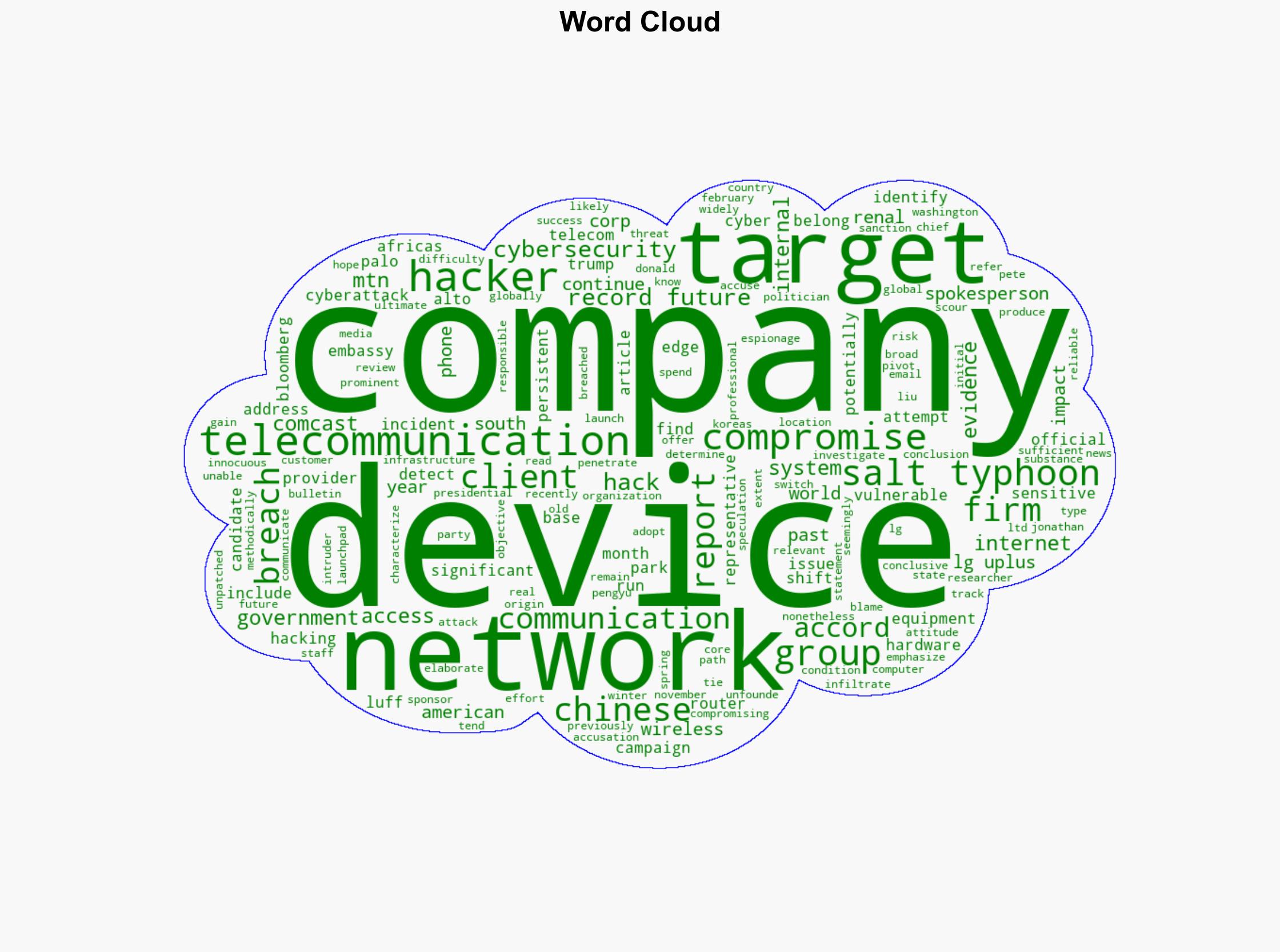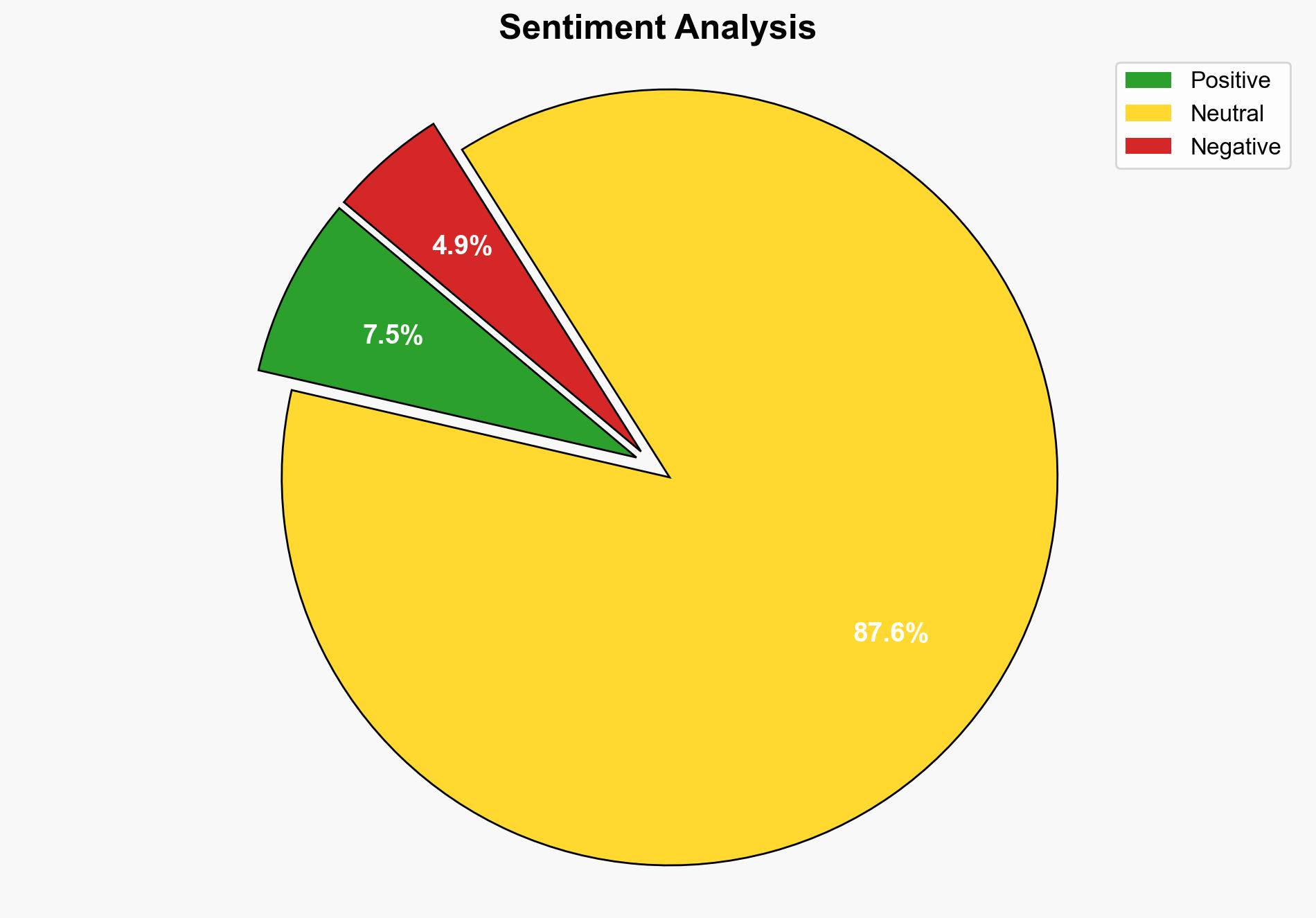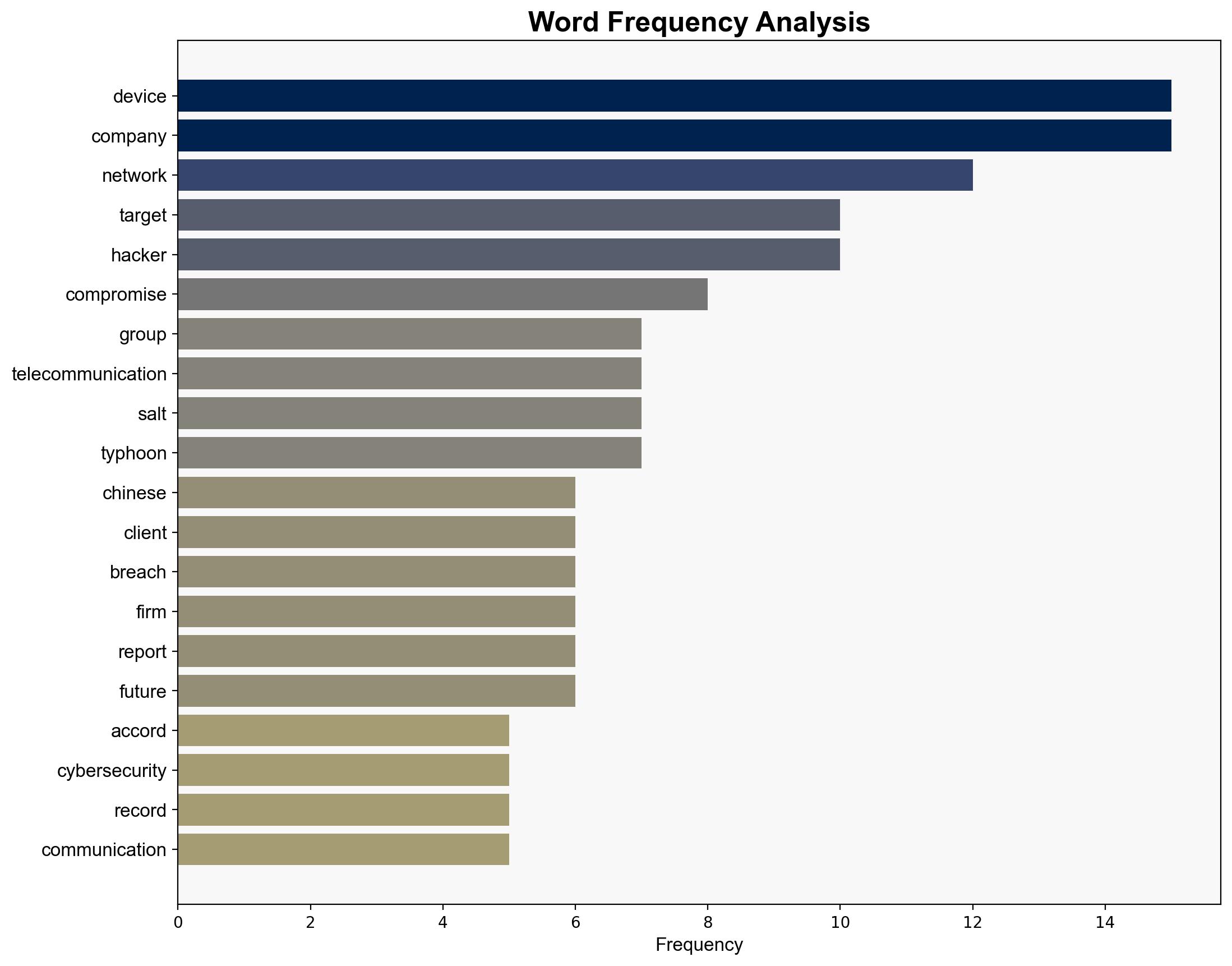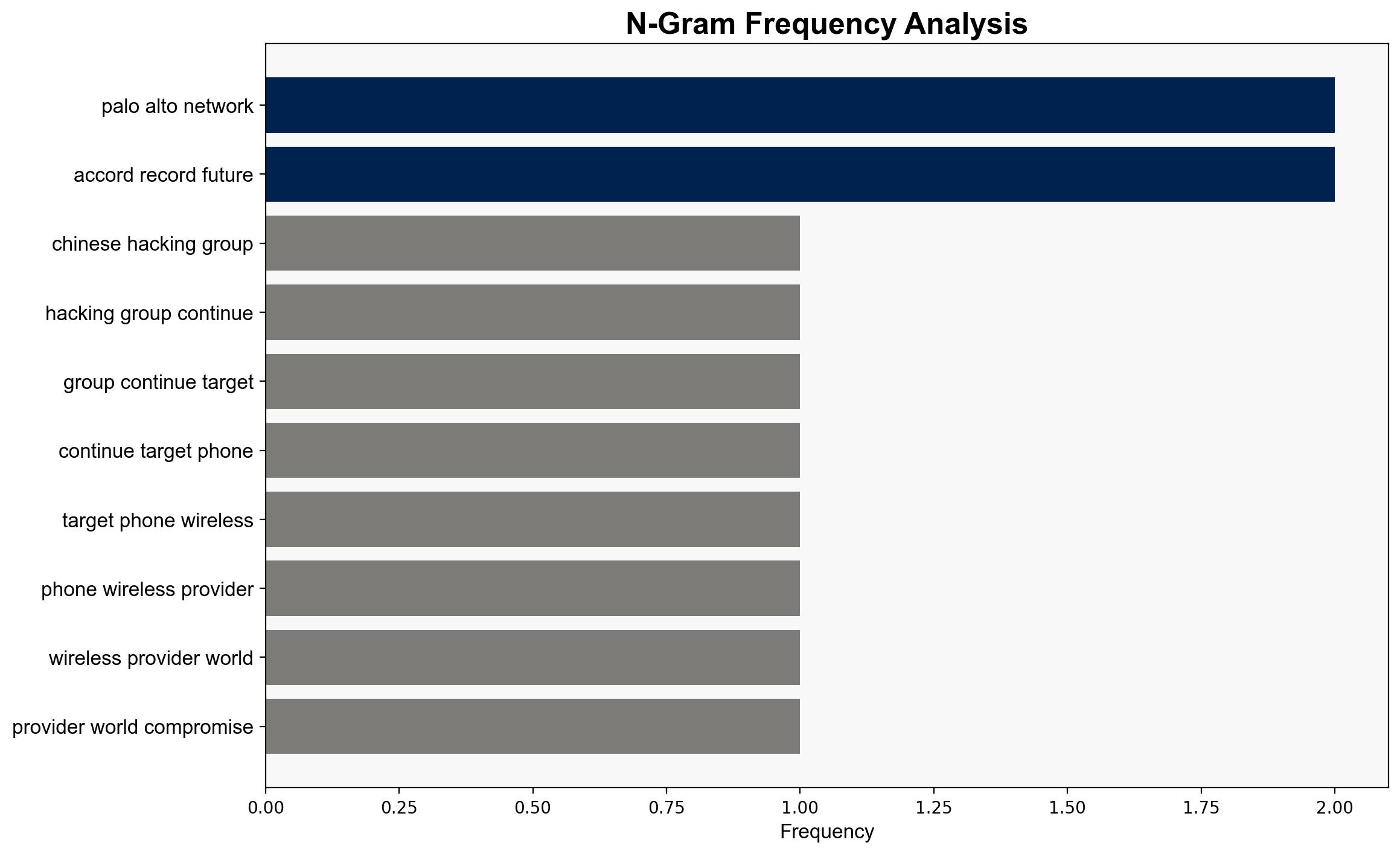Chinese Hackers Still Trying to Break Into Telecoms Across Globe – Insurance Journal
Published on: 2025-07-18
Intelligence Report: Chinese Hackers Still Trying to Break Into Telecoms Across Globe – Insurance Journal
1. BLUF (Bottom Line Up Front)
Chinese state-sponsored hacking groups, particularly known as “Salt Typhoon,” continue to target global telecommunications networks. These efforts focus on compromising network hardware and devices tied to telecom companies, posing a persistent threat to sensitive communications. Immediate steps to enhance cybersecurity measures and international cooperation are recommended to mitigate these risks.
2. Detailed Analysis
The following structured analytic techniques have been applied to ensure methodological consistency:
Adversarial Threat Simulation
Simulations suggest that Salt Typhoon’s tactics involve exploiting unpatched vulnerabilities in network devices, enabling them to pivot into core telecommunications networks.
Indicators Development
Monitoring for unusual device communications and unauthorized access attempts can provide early warnings of potential breaches.
Bayesian Scenario Modeling
Probabilistic models indicate a high likelihood of continued targeting of telecom infrastructure, with potential escalation in sophistication and scope.
Network Influence Mapping
Analysis of influence networks reveals strategic targeting of telecoms to disrupt or intercept communications, potentially impacting national security.
3. Implications and Strategic Risks
The persistent targeting of telecoms by Chinese hackers could lead to significant disruptions in communications infrastructure, affecting both civilian and governmental operations. This poses a risk to national security and economic stability, with potential cross-domain impacts on political and military dimensions.
4. Recommendations and Outlook
- Enhance cybersecurity protocols across telecom networks, focusing on patching known vulnerabilities and improving incident response capabilities.
- Foster international collaboration to share threat intelligence and coordinate defensive measures against state-sponsored cyber threats.
- Scenario-based projections:
- Best Case: Strengthened defenses deter future attacks, maintaining secure communications.
- Worst Case: Successful breaches lead to significant data theft and disruption of critical services.
- Most Likely: Continued attempts with periodic breaches, necessitating ongoing vigilance and adaptation.
5. Key Individuals and Entities
Liu Pengyu, Jonathan Luff, Pete Renals
6. Thematic Tags
national security threats, cybersecurity, counter-terrorism, regional focus





